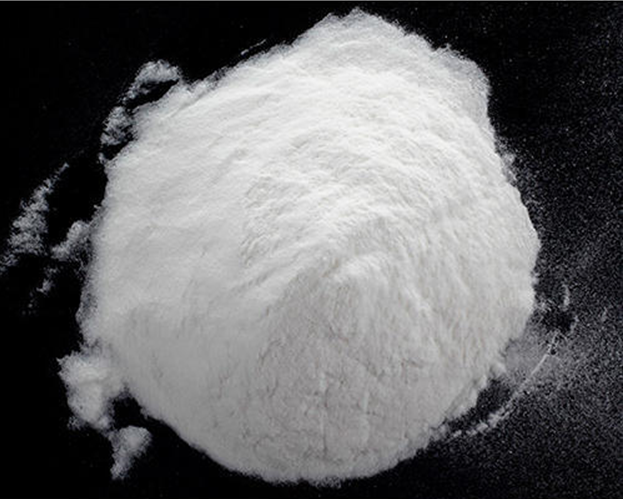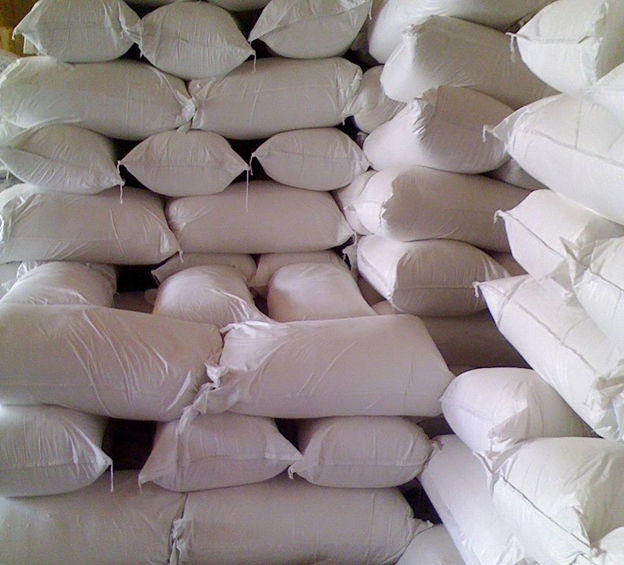Description of Polyanionic Cellulose:
Polyanionic cellulose, abbreviated as PAC.
It is a water-soluble polymer derived from cellulose. It would be more accurate to say polyanionic cellulose is a water-soluble cellulose ether chemically modified from natural cellulose.
Its water resistance properties prevent fluid loss in mud. Having low viscosity and the high viscosity properties make this product more quality especially in drilling usages.
The appearance of poly anionic cellulose is white and light-yellow powder or particle. It is odorless, non-toxic, and strong moisture absorption. Polyanionic cellulose polymer is easily soluble in cold water and hot water. It has excellent thermal stability, salt resistance and strong antibacterial activity.
PAC It has a similar molecular structure to carboxymethyl cellulose (CMC).
However, it is considered better than CMC in terms of filtration reduction, anti-salt, anti-collapse, and high-temperature resistance.
It can be used at temperatures up to 150°C.Polyanionic cellulose is also an important material for the preparation of drilling fluids. Therefore, poly anionic cellulose is widely used in oil drilling, especially salt well and offshore oil drilling.
Polyanionic cellulose slurry displays superior fluid loss reducing capability, rejection capability and higher temperature tolerance in various applications.
Application of PAC:
Polyanionic Cellulose is an extremely useful organic chemical, and for that reason, it has several industrial uses.
Its main applications and strengths are:
It is used as a main fluid-loss reducer in water-based drilling fluids.
It is commonly used as a drilling fluid additive.
It is used to cool down and lubricate the mud-bit while drilling.
It aids in the suspension of formation cuttings.
It is used in adjusting mud viscosity levels.
It can be used as part of a mixture to change pH levels.
It aids the transportation of the surface and manages formation pressure throughout the oil well.
It is used to prevent well collapse while drilling.
It is used to keep down the turbulence scale to minimize the pressure loss in the reverse-flow system.
Uses of Polyanionic Cellulose:
PAC-HV is for water-based drilling fluids, which can effectively reduce the filtration rate of many water-based oil and gas drilling fluids and may also be used to increase and stabilize viscosity to improve hole cleaning and suspension properties in a wide variety of fluid environment.
PAC-LV is for use in solids-laden, water-based drilling fluids, which can effectively reduce the filtration rate of many water-based drilling fluids, without causing significant increases in viscosity or gel strength.
Oil Drilling
PAC is a cost-effective additive to reduce the API filtration rate of many water-based drilling fluids including fresh water, seawater, saturated saltwater, and solids-free brines, native mud, flocculated mud, inhibited mud and contaminated systems.
PAC increases and stabilizes viscosity to improve rheology, wellhole cleaning, and suspension property by coating and encapsulating cuttings and solids of drilling fluids.
PAC is effective over a wide range of pH environments. It lubricates solids in the system, improves wall cake characteristics, and reduces the potential for the stuck pipe.
Packing of Polyanionic cellulose:
PAC Polyanionic cellulose can supply with 25 kg bag. It can also depend on the customer request. For 20 Ft container 15 MT with 10 pallets and 40ft container can load with 25 MT with 20 pallets.
Preparation & Procedures:
PAC should be stored in a dry location. To avoid lumping, it is added to the mud system through the hopper with less than two sacks been added in an hour.
Those working with PAC should wear appropriate Personal Protective Equipment, including dust masks and eye protection, while mixing powdered products.
Always try to avoid skin contact and do not inhale dust or allow contact with eyes.
Technical Data sheet of PAC:
| TEST ITEM | STANDARD | ||
|---|---|---|---|
| PAC-LV | PAC-HV | ||
| Appearance | Freely flowable powder | ||
| pH value | 6.0-8.0 | 6.0-8.0 | |
| Purity, % | 95 Min | 95 Min | |
| Moisture, % | 10 Max | 10 Max | |
| D.S. | 0.90 Min | 0.90 Min | |
| Viscosity Brookfield 1% | 50 Max | 1500 Min | |
| API Fluid Lose | Increase 0.57% | 25.0ml Max | 20.0ml Max |
| API Fluid Lose | Increase 0.86% | 15.0ml Max | 15.0ml Max |
| API Fluid Lose | Increase 1.14% | 10.0ml Max | 10.0ml Max |
| YP Value | Increase 0.57% | 0.5 Max | 2.4 Min |
| YP Value | Increase 0.86% | 1.0 Max | 9.6 Min |
| YP Value | Increase 1.14% | 1.5 Max | 19.2 Min |



